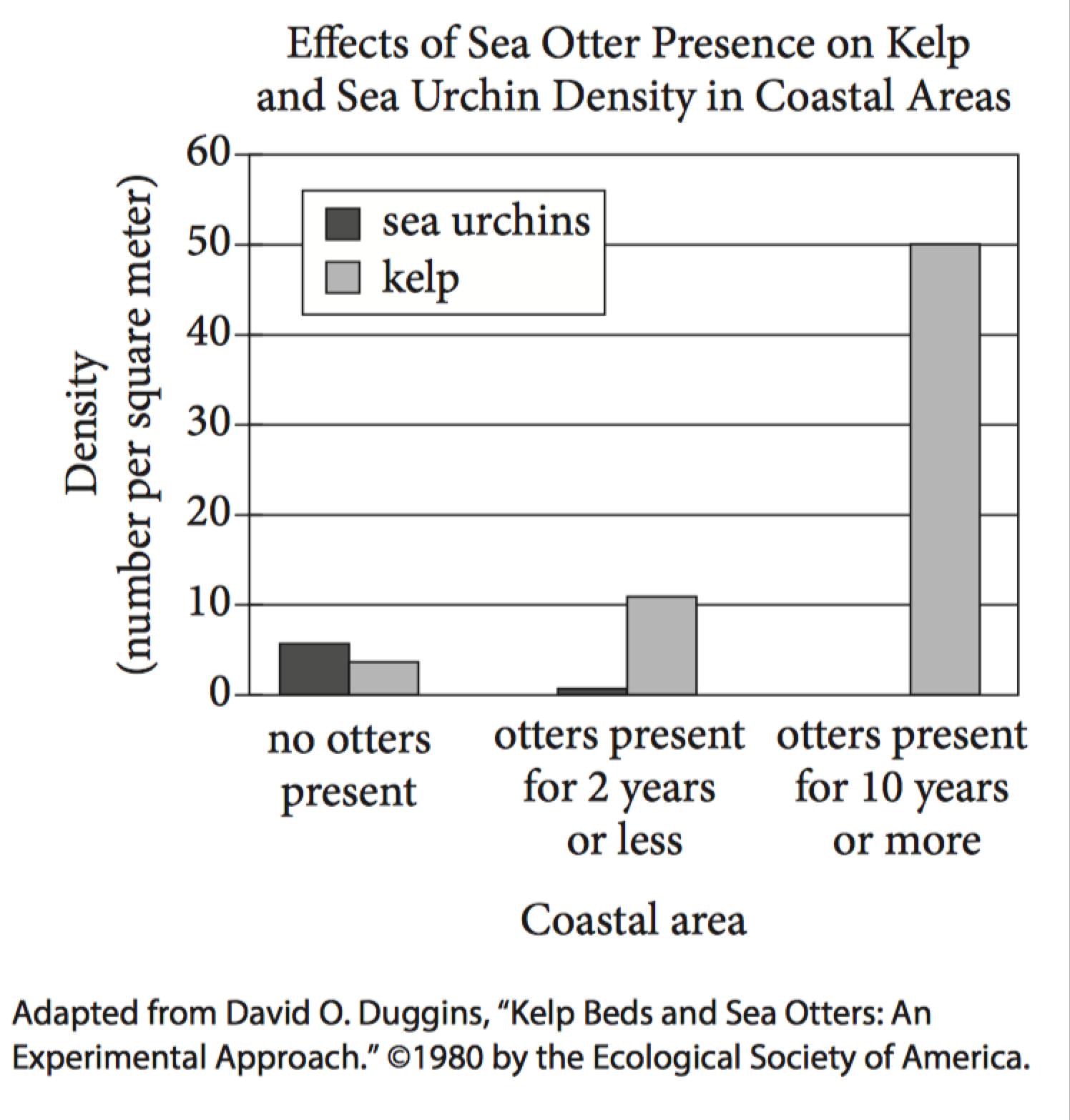Questions 23-33 are based on the following
passage.
Environmentalist Otters
It has long been known that the sea otters Q23 living along the West Coast of North America help keep kelp forests in their habitat healthy and vital. They do this by feeding on sea urchins and other herbivorous invertebrates that graze voraciously on kelp. With sea otters to keep the population of sea urchins in check, kelp forests can flourish. In fact, Q24 two years or less of sea otters can completely eliminate sea urchins in a coastal area (see chart). Without sea otters present, Q25 nevertheless, kelp forests run the danger of becoming barren stretches of coastal wasteland known as urchin barrens. [1] What was less well-known, until recently at least, was how this relationship among sea otters, sea urchins, and kelp forests might help fight global warming. [2] The amount of carbon dioxide in the atmosphere has increased 40 percent Q26 . [3] A recent study by two professors at the University of California, Santa Cruz, Chris Wilmers and James Estes, Q27 suggests, that kelp forests protected by sea otters can absorb as much as twelve times the amount of carbon dioxide from the atmosphere as those where sea urchins are allowed to Q28 devour the kelp. [4] Like Q29 their terrestrial plant cousins, kelp removes carbon dioxide from the atmosphere, turning it into sugar fuel through photosynthesis, and releases oxygen back into the air.[5] Scientists knew this but did not recognize Q30 how large a role they played in helping kelp forests to significantly decrease the amount of carbon dioxide in the atmosphere. [6] Far from making no difference to the ecosystem, the presence of otters was found to increase the carbon storage of kelp forests by 4.4 to 8.7 megatons annually, offsetting the amount of carbon dioxide emitted by three million to six million passenger cars each year. Q31 Wilmers and Estes caution, however, that Q32 having more otters will not automatically solve the problem of higher levels of carbon dioxide in the air. But they suggest that the presence of otters provides a good model of how carbon can be sequestered, Q33 or removed; from the atmosphere through the management of animal populations. If ecologists can better understand what kinds of impacts animals might have on the environment, Wilmers contends, “there might be opportunities for win-win conservation scenarios, whereby animal species are protected or enhanced, and carbon gets sequestered.”
